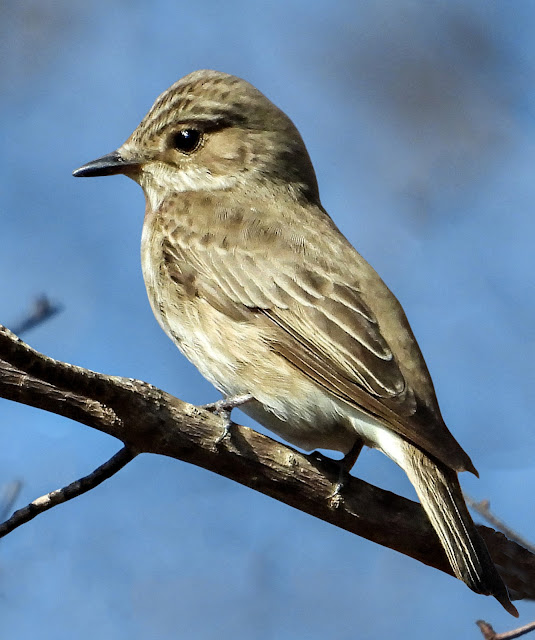The Eurasian hoopoe (Upupa epops ) is the most widespread species of the genus Upupa. It is a distinctive cinnamon coloured bird with black and white wings, a tall erectile crest, a broad white band across a black tail, and a long narrow downcurved bill. Its call is a soft "oop-oop-oop". It is native to Europe, Asia and the northern half of Africa. It is migratory in the northern part of its range. It spends most of the time on the ground probing for grubs and insects. The clutch of seven to eight eggs is laid in an existing cavity. The eggs are incubated by the female and hatch asynchronously. Some ornithologists treat the African and Madagascar hoopoes as subspecies of the Eurasian hoopoe.
The Eurasian hoopoe is a cinnamon-colored bird with black and white wings, a tall erectile crest, a broad white band across a black tail, and a long narrow downcurved bill. The bird has broad and rounded wings capable of strong flight which are larger in the northern migratory subspecies. The hoopoe has a characteristic undulating flight, which is like that of a giant butterfly, caused by the wings half-closing at the end of each beat or a short sequence of beats.
Eurasian hoopoes are widespread in Europe, Asia, and North Africa, and northern Sub-Saharan Africa. Most European and north Asian birds migrate to the tropics in winter. Those breeding in Europe usually migrate to the Sahel belt of sub-Saharan Africa. The African populations are sedentary all year. Eurasian hoopoes require bare or lightly vegetated ground on which to forage and vertical surfaces with cavities (such as trees, cliffs, or even walls, nestboxes, haystacks, and abandoned burrows) in which to nest. These requirements can be provided in habitats such as heathland, wooded steppes, savannas and grasslands, as well as forest glades.
Eurasian hoopoes are active during the day spending most of the time on the ground probing for grubs and insects. They are solitary foragers who typically feed on the ground. More rarely they will feed in the air, where their strong and rounded wings make them fast and maneuverable, in pursuit of numerous swarming insects. More commonly their foraging style is to stride over relatively open ground and periodically pause to probe the ground with the full length of their bill. The rest of the time is typically spent sunbathing by spreading out their wings and tails low against the ground and tilting their head up; they often fold their wings and preen halfway through. They also enjoy taking dust and sand baths. The typical call of these birds is a trisyllabic ‘oop-oop-oop’. Other calls include rasping croaks, when alarmed, and hisses. Females produce a wheezy note during courtship feeding by the male.
Eurasian hoopoes are serially monogamous, meaning they form pair bonds that last for a single breeding season. They are solitary and territorial breeders. The male calls frequently to advertise his ownership of the territory. Chases and fights between rival males (and sometimes females) are common and can be brutal. Birds will try to stab rivals with their bills, and individuals may be occasionally blinded in fights. The nest of Eurasian hoopoes is usually located in a hole in a tree or wall. It has a narrow entrance and may be unlined, or various scraps may be collected. The female alone is responsible for incubating the eggs. Clutch size varies with location and can contain from 4 to 12 eggs. The incubation period lasts between 15 and 18 days, during which time the male feeds the female. The chicks hatch with a covering of downy feathers. By around day 3 to 5, feather quills emerge which will become the adult feathers. The chicks are brooded by the female for between 9 and 14 days. The female later joins the male in the task of bringing food. The young fledge in 26 to 29 days and remain with the parents for about a week more.









%2022.jpg)



%201.jpg)
%202.jpg)




%20(Turdus%20merula)%2020.jpg)





%201.jpg)








%201.jpg)
%202.jpg)
%203.jpg)



%201.jpg)
%201.jpg)
%202.jpg)
%201.jpg)
%201.jpg)
%201.jpg)